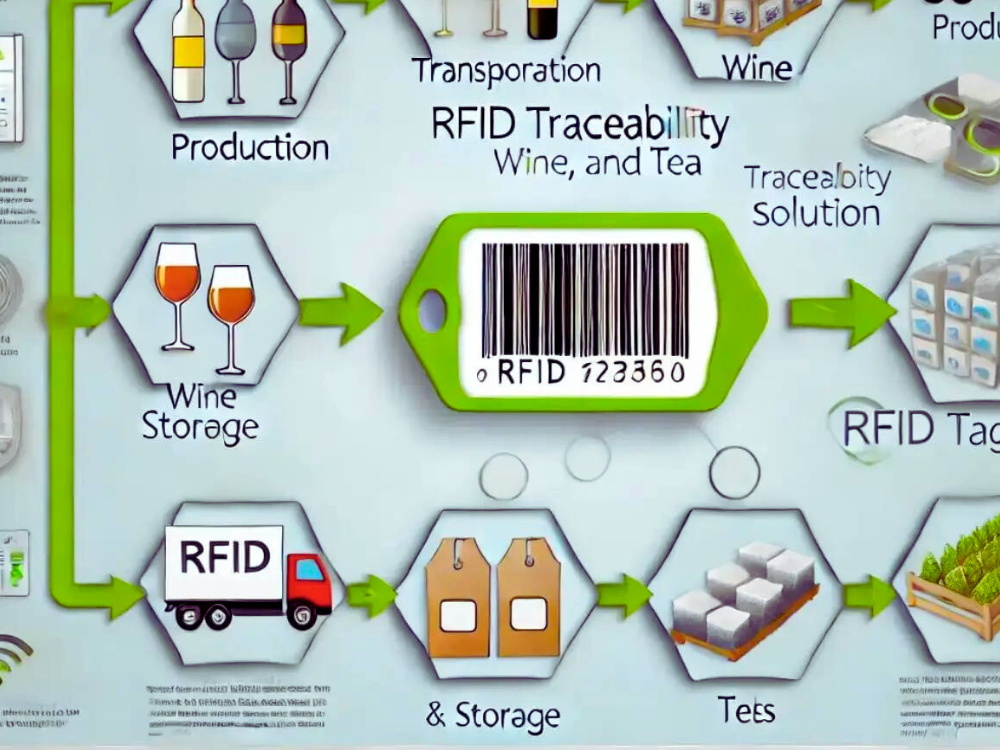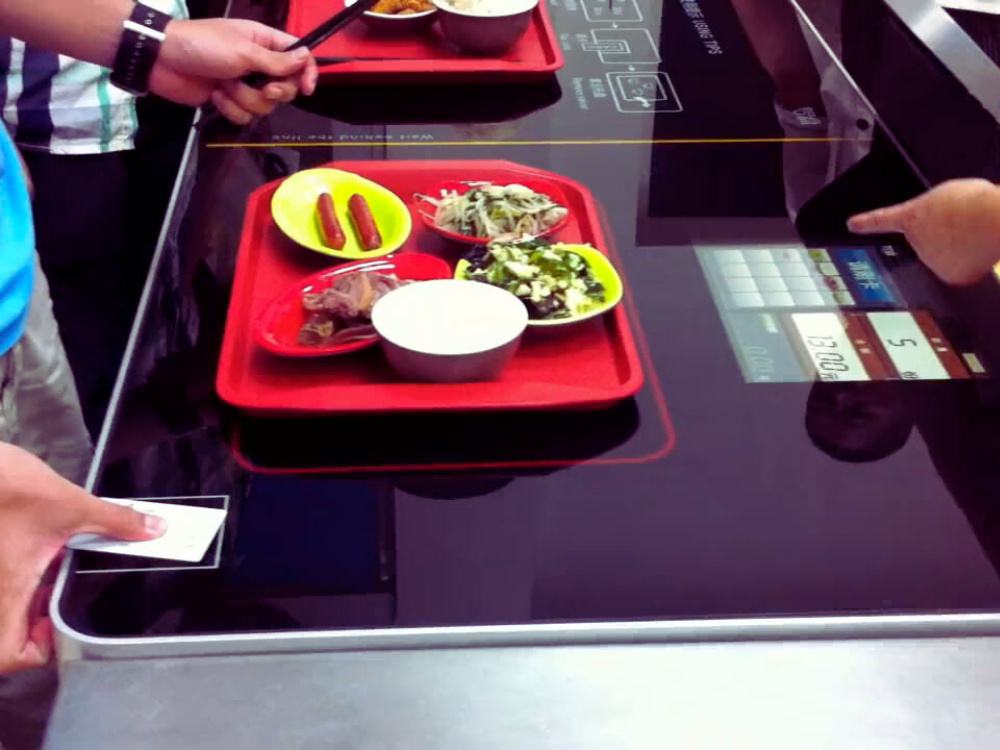
Enhancing Efficiency in the Fast Food Industry with RFID Technology
Table of Contents
Summary
By incorporating RFID systems, fast food establishments can streamline processes, enhance accuracy, and optimize resource utilization. This article delves into how RFID technology functions within the fast food sector, highlighting its applications, benefits, and implementation strategies.

Overview of RFID Technology in Fast Food Operations
RFID technology leverages electromagnetic fields to identify and track objects automatically. In the fast food industry, RFID systems are used to manage inventory, monitor food quality, and enhance customer experiences. The technology integrates three main components: RFID tags, readers, and backend software, which work together to provide comprehensive solutions to common challenges in fast food management.
Key Components of RFID Systems
- RFID Tags: These small, electronic devices are attached to items such as food containers and equipment. RFID tags store unique identifiers that are read by RFID readers.
- RFID Readers: Devices that emit radio waves to communicate with RFID tags. They capture data from tags and transmit it to backend systems.
- Backend Software: Systems that process and analyze data collected by RFID readers, providing actionable insights for inventory management and operational efficiency.
Applications of RFID in the Fast Food Industry
RFID technology offers numerous applications within the fast food industry, each contributing to operational enhancements and improved service delivery.
Inventory Management
RFID technology facilitates precise tracking of inventory, from raw ingredients to finished products. This application is crucial for maintaining stock levels, reducing waste, and ensuring timely replenishment.
Benefits of RFID in Inventory Management
- Real-Time Tracking: Provides accurate and up-to-date information on inventory levels.
- Reduced Waste: Minimizes spoilage by improving inventory turnover and management.
- Efficient Restocking: Automates reorder processes based on real-time data.
Quality Control
Ensuring food safety and quality is paramount in the fast food industry. RFID technology helps monitor food items throughout their lifecycle, from preparation to delivery.
Advantages in Quality Control
- Traceability: Tracks the origin and handling of food items, ensuring compliance with safety standards.
- Consistency: Monitors storage conditions and handling processes to maintain product quality.
- Regulatory Compliance: Assists in adhering to health and safety regulations by maintaining detailed records.
Order Fulfillment and Customer Service
RFID systems enhance order accuracy and speed up service delivery, leading to improved customer satisfaction.
Enhancements in Order Fulfillment
- Order Accuracy: Reduces errors by automating the order and preparation processes.
- Faster Service: Speeds up order processing and delivery through streamlined workflows.
- Customer Experience: Provides a seamless and efficient service experience, enhancing customer satisfaction.
Types of RFID Tags Used in Fast Food Operations
Different types of RFID tags are employed depending on the specific needs and requirements of the fast food industry. The following table outlines the key RFID tag types and their applications:
Tag Type | Description | Applications |
Passive Tags | Do not have a battery; powered by the reader’s signal. | Ideal for inventory tracking and quality control. |
Active Tags | Equipped with a battery, offering longer-range communication. | Used for high-value items or critical equipment tracking. |
Semi-Passive Tags | Combine a battery with passive technology for extended range and functionality. | Suitable for detailed monitoring of food items and equipment. |
Implementing RFID Technology in Fast Food Operations
Successful implementation of RFID technology requires careful planning and consideration of various factors.
Assessing Requirements and Selecting the System
Identifying specific needs and selecting the appropriate RFID system is crucial for effective deployment. Key considerations include:
- Tag Type and Range: Choose tags that meet the operational requirements for range and functionality.
- Reader Compatibility: Ensure readers are compatible with the selected tags and integrate seamlessly with existing systems.
Cost and ROI Considerations
Conduct a thorough cost-benefit analysis to evaluate the financial implications of RFID adoption. Important factors include:
- Initial Investment: Costs associated with purchasing tags, readers, and system integration.
- Operational Savings: Potential savings from improved efficiency and reduced errors.
- Long-Term Benefits: Enhanced operational efficiency and customer satisfaction.

Training and Support
Proper training and support are essential for maximizing the benefits of RFID technology. Ensure staff are well-trained in using RFID systems and that reliable support is available for maintenance and troubleshooting.
Conclusion
RFID technology offers significant advantages for the fast food industry, improving inventory management, quality control, and customer service. By adopting RFID systems, fast food establishments can enhance operational efficiency, reduce waste, and deliver a superior customer experience. As technology continues to evolve, RFID will play an increasingly vital role in shaping the future of fast food operations.
Comments
Hot Products

What Is RFID Waste Management
Imagine a city where every trash bin speaks — not literally — but through a tiny chip that tells the system when it’s full, when it’s emptied, and where it went. That’s what RFID waste management is doing today.

What are Bolt Seals and their Applications? | Complete Guide
In global trade and logistics, bolt seals play a crucial role in ensuring cargo security and compliance. These small but powerful devices are designed to lock shipping containers, trailers, and cargo doors with a tamper-evident mechanism.

What is an RFID Card Protector? Benefits, Use Cases, and Buying Guide
RFID technology (Radio Frequency Identification) is everywhere: in your credit cards, ID badges, transit passes, hotel room keys, and more. It offers speed and convenience, but it also opens the door to a new kind of digital theft called “skimming.” That’s where an RFID card protector comes in.

RFID Wristbands for Events: Bulk Buying Guide for Organizers
RFID wristbands for events are becoming the go-to solution for organizers who need faster entry, fraud prevention, and cashless payments at concerts, festivals, and sports venues. Unlike paper tickets or QR codes, these smart wristbands use embedded chips to streamline access, secure transactions, and improve the guest experience.

How RFID Tag on Windscreen Improves Vehicle Access Control and Toll Systems
In today’s fast-paced world, vehicle identification needs to be quick, secure, and contactless. An RFID Tag on the Windscreen provides exactly that — a reliable way to manage toll collection, parking, and gated access without stopping vehicles.

The Benefits of RFID Linen Tags in Commercial Laundry
Managing laundry in hospitals, hotels, or large laundry services is a big job. Each day, thousands of sheets, towels, and uniforms are washed, sorted, and sent back out. But problems like lost linens, sorting mistakes, and manual counting can cost companies a lot of money. For example, mid-sized hotels can lose over $200,000 each year from missing linens.
That’s where RFID Linen Tags come in.
Tags
RELATED BLOGS

What Is RFID Waste Management
Imagine a city where every trash bin speaks — not literally — but through a tiny chip that tells the system when it’s full, when it’s emptied, and where it went. That’s what RFID waste management is doing today.

What are Bolt Seals and their Applications? | Complete Guide
In global trade and logistics, bolt seals play a crucial role in ensuring cargo security and compliance. These small but powerful devices are designed to lock shipping containers, trailers, and cargo doors with a tamper-evident mechanism.

What is an RFID Card Protector? Benefits, Use Cases, and Buying Guide
RFID technology (Radio Frequency Identification) is everywhere: in your credit cards, ID badges, transit passes, hotel room keys, and more. It offers speed and convenience, but it also opens the door to a new kind of digital theft called “skimming.” That’s where an RFID card protector comes in.




